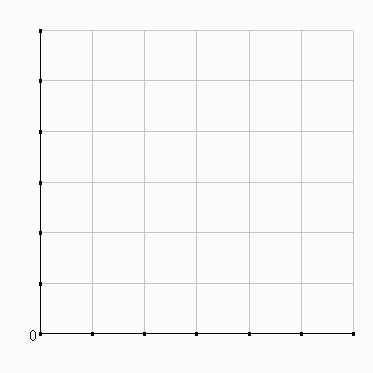|
K L Q a 1 0 ___ b 1 1 ___ c 1 2 ___ d 1 3 ___ e 1 4 ___ |
 |
III. THEORY OF THE FIRM: PRODUCTION AND COSTS
INTRODUCTION
So far: looked at households as consumers
--demand side of product markets
--will appear again on supply side of resource markets
Focus now: firms:
--supply side of product markets
--will appear again on demand side of resource markets (implicitly
there now)
The better you learned consumer theory, the easier
producer theory will be.
Else, get a 2d chance to learn it now.
Basic assumptions: goal: firms try to maximize profits
Profits = TR - TC
Constraints:
Technology
Input prices
Demand for output
In practice: firms maximize "discounted value of expected future profits"
--intertemporal
--expected
A. PRODUCTION THEORY
One of the constraints faced by firms is the technology they have to work with. A production function is intended to reflect this technology constraint
A production function tells us the maximum amount of output which can be obtained from any specified set of inputs.
Q = f(L,K,F3,F4,...)
Q = output
L = Labor
K = Capital
F3, F4,... = other inputs
Note: must use inputs efficiently most unrealistic assumption here: only one output
Ex: Q = 18 K1/2L1/2 (a Cobb-Douglas production function)
L = 4 / K = 16 / Q = 18 x 2 x 4 = 144
1. PRODUCTION IN THE SHORT RUN
a. BASIC SITUATION
Distinguishing characteristic:
Short run => one or more inputs is
fixed.
Ex here: fixed input: K variable input: L
No decision is ever really SR or LR.
Every benefit-cost decision should take all future B's and C's into
account, properly adjusted to recognize that $now>$later.
The key is: + time => + # of costs you have control over.
The only costs which matter = those you can control
Geometry
We can depict the behavior of total output of the
firm as one input is allowed to vary, all others held constant.
Here: L varies, K constant, typical of SR.
Exercise: Q=widgets L=labor
|
K L Q a 1 0 ___ b 1 1 ___ c 1 2 ___ d 1 3 ___ e 1 4 ___ |
 |
Note: it's possible to add so much L that tp falls--firms would never do so voluntarily.
? What's the meaning of the convex stretch of Q?
Suppose we raise this firm's capital: k = 2.
? What happens in our diagram?
For each combination of the fixed inputs we can and must draw a total product curve for the variable input.
b. RESOURCE PRODUCTIVITY CONCEPTS
Our ultimate concern: how to choose inputs to produce our output as inexpensively as possible.
For decisionmaking, it turns out to be very useful to
make use of some per unit resource productivity concepts instead of just total output
Input productivity concepts are
meaningful only when the amounts of the other inputs are held fixed
Ex: given Ko, a fixed amount of k:
Average Product of Labor (APL):
APL = Q/L
Marginal product of labor (MPL): Change in total output associated with a change in labor input: MPL = DQ/DL
Ex. from widgets:
K L Q APL MPL
a 1 ___ ___ ___
b 1 ___ ___ ___ ___
? Does APL rise or fall?
? How does MPL account for that?
| Universal relationship between
MPL and APL: As L rises: MPL > APL => __________ MPL = APL => __________ MPL < APL => __________ |
 |
Notes:
(1) MPL rises at first--maybe, maybe not (sports)
(2) When MPL 1st falls, APL still rises.
(3) MPL can turn negative, but => Q falls => never worth hiring
such workers.
Diminishing returns
Behavior of productivity curves depicted above is
thought to be quite general:
Law of dinimishing returns: if
one input is increased while the others are held constant, the marginal and average
products of the variable input will eventually decline.
DMR = diminishing marginal returns
DAR = diminishing average returns
Assumes
(1) a given technology
(2) other inputs fixed.
Ex: Cobb-Douglas production function:
Ex:
Q = 18 K1/2L1/2
K = 4 => Q = 36L1/2
APL = 36L1/2/L = 36/L1/2
MPL = dQ/dL = 1/2(36L-1/2) = 18/L1/2
| L | Q | APL | MPL |
| 1 | |||
| 4 | |||
| 9 | |||
|
|||
Note from formulas:
--L in denominator: APL and MPL fall as L rises.
--Therefore, for all L, this C-D production function has DMR and DAR.
(Verify that it will not have DMR and DAR if exponent on L exceeds 1.)